Places, Plants and People: A collaborative exhibition
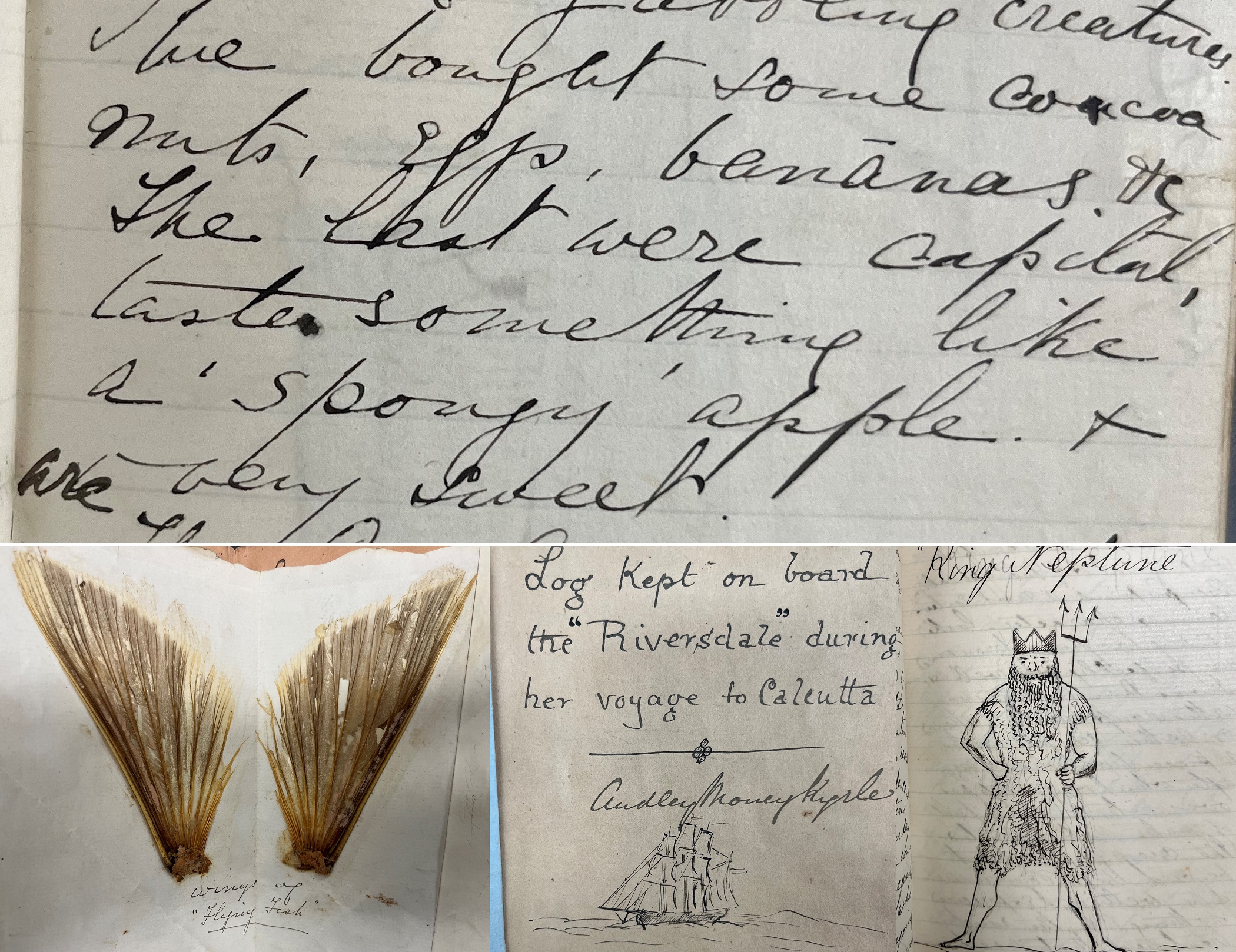
For the first time since the network’s formation, our members have come together to create a virtual exhibition, highlighting some of the treasures of our collections. The diversity of the archives held are reflected in this exhibition, which showcases objects relating to living landscapes, plants and their place in communities. Explore these treasures and find out how to learn more about our members and their collections.
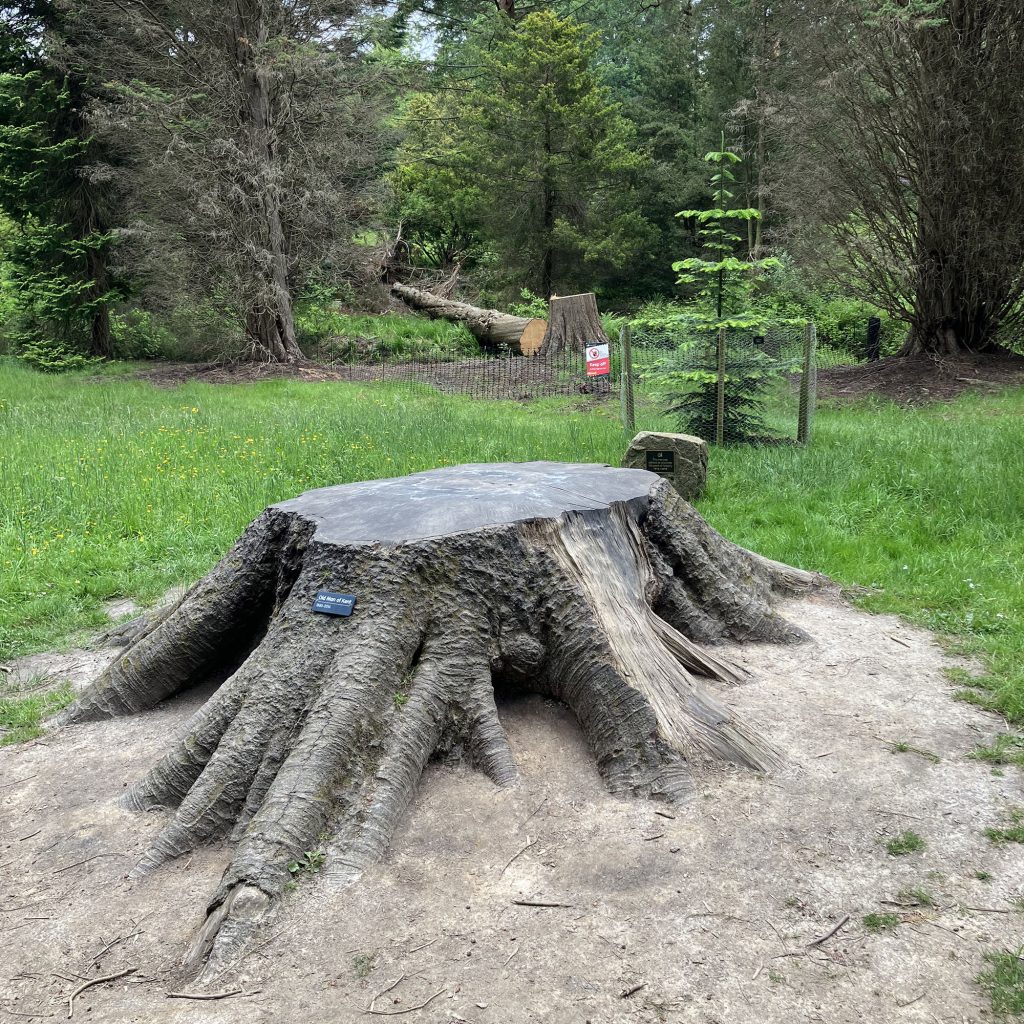
The Old Man of Kent – Bedgebury National Pinetum and Forest
Bedgebury Pinetum in Kent is home to the national conifer collection. Managed by Forestry England it has over 12,000 specimen trees set in the High Weald National Landscape.
The trees in Bedgebury Pinetum form a living archive that was started in the 1800’s by the Beresford family who owned the estate that now forms the national collection. They planted a grand fir (Abies grandis) in 1880 that grew to be the tallest tree in Kent.
The Great Storm in 1987 caused the Old Man to lose one of its limbs and this is thought to have let rot set in. In 2016 the difficult decision was taken to fell the tree after another limb came down in Storm Katie.
As part of our ongoing conservation work with international partners, the Bedgebury team had already collected seeds of the grand fir, the same tree type as the Old Man, from the USA in 2015. They have propagated some of these seeds, so the Old Man’s replacement was planted by Sir Harry Studholme in 2019 next to the stump of the old tree to commemorate the centenary of the Forestry Commission.
The living archive at Bedgebury Pinetum is vital for conifer conservation. The IUCN have classified 34% of all conifers as being threatened by extinction. However, by their nature living trees die so it’s vital that seed collection and planting continues in order to maintain the collection.
Find out more: www.forestryengland.uk/bedgebury
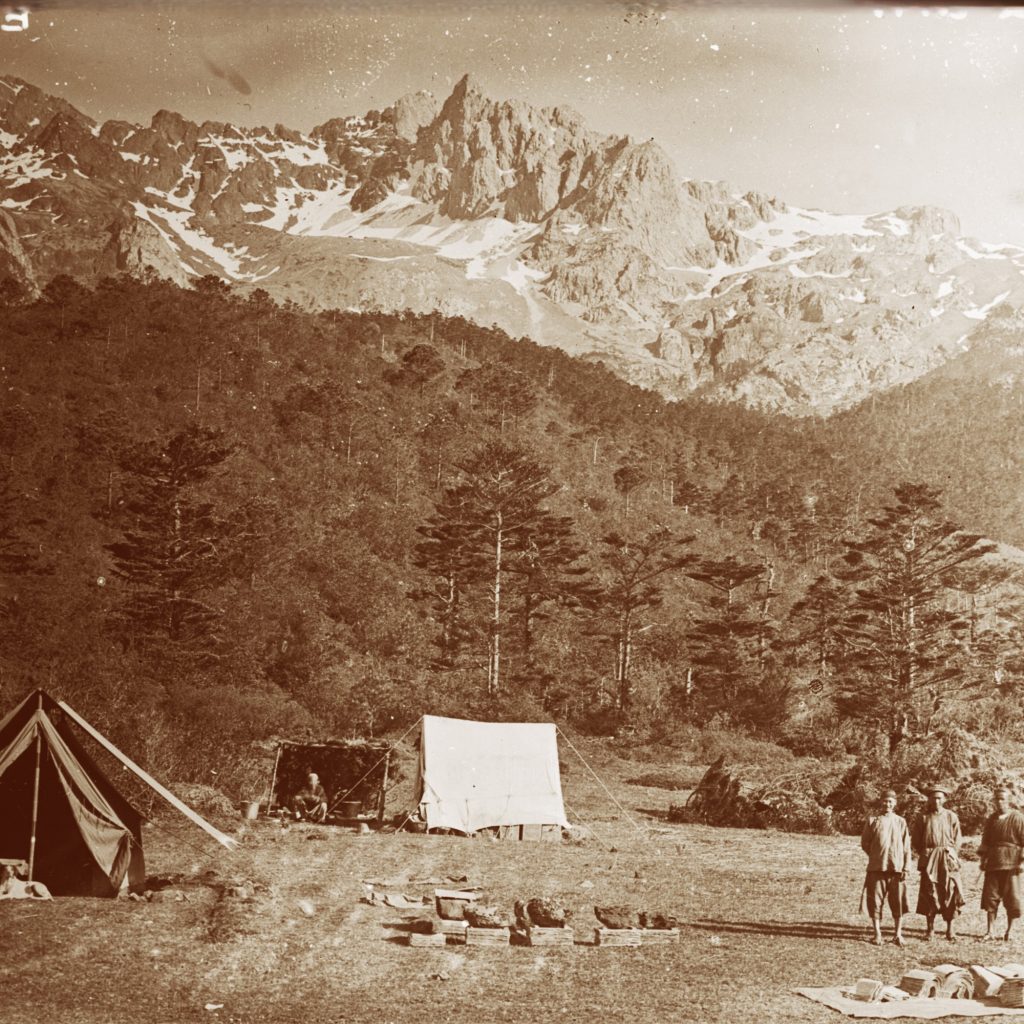
Camp Chopadola – Royal Botanic Garden Edinburgh
The Royal Botanic Garden Edinburgh (RBGE) Archive contains papers, photographs and items that relate to our own workings and history, but also to the history of botany and gardening and of the movement of plants around the U.K. and the World.
It is difficult to select an item or image that represents everything we care for in the RBGE Archive, but when thinking about the theme of Places, Plants and People, one image moved to the top of the list.
This is a photograph of ‘Camp Chopadola’ taken by the plant collector George Forrest in the Yulong Xue Shan (Jade Dragon Snow Mountain) to the north of Lijiang in Yunnan province, southwest China in June 1906. It shows the ‘canvas life’ sometimes experienced on expedition, the landscape he and his collectors worked in, some of his team comprised of local men from the Naxi indigenous group, and the work they were involved in – drying and pressing plant specimens between sheets of paper under heavy rocks.
The George Forrest collection is one of the most well-used that we hold in the RBGE Archive. https://atom-2.rbge.org.uk/index.php/forrest-george
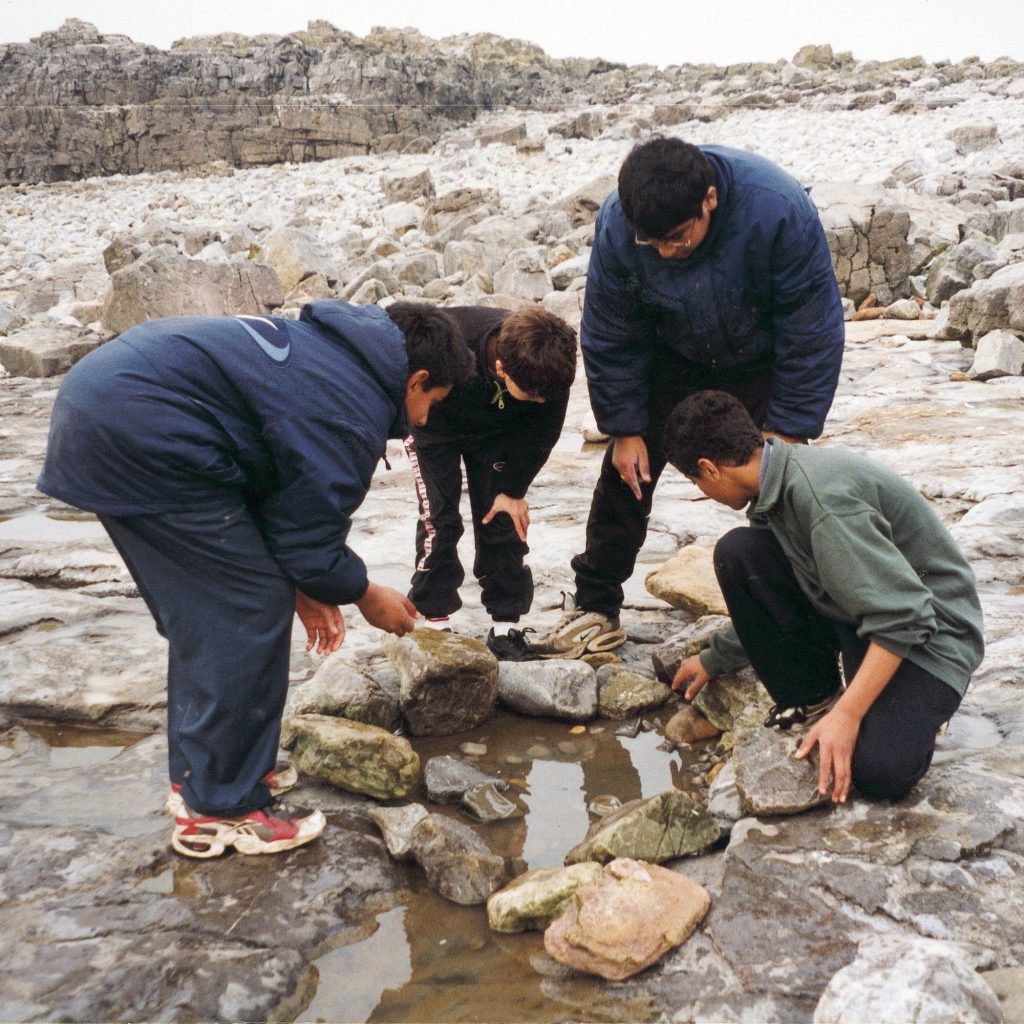
Exploring Rock Pools – Black Environment Network
This image of young people exploring rock pools belongs to a gallery of photos of ethnic minority environmental participation that include many historically first images of such activities. These photos bear witness to BEN’s pioneering work in developing groundbreaking methodology to lay down the basis for integrated multicultural environmental participation, with the aim of ultimately opening up a vast missing contribution, whether through lifestyle adjustments or direct volunteering in the care and protection of nature. Such trips enabled urban bound ethnic minorities to access contact with nature for the first time. Investing in enjoyment to promote ownership and identification with nature as the first steps was a challenging way of thinking in 1987, when nature conservation focused on a “people for nature” paradigm. BEN moved the sector paradigm towards a two way street framework of “ people for nature and nature for people.” Our archives include collections of articles on ethnic minority engagement, reports on developmental work in partnership with the environmental sector, and resources (guidance, evaluation, consultation, research) written by BEN for ethnic communities and environmental professionals. We also hold guides and research on community engagement written by mainstream environmental organisations with input by BEN.
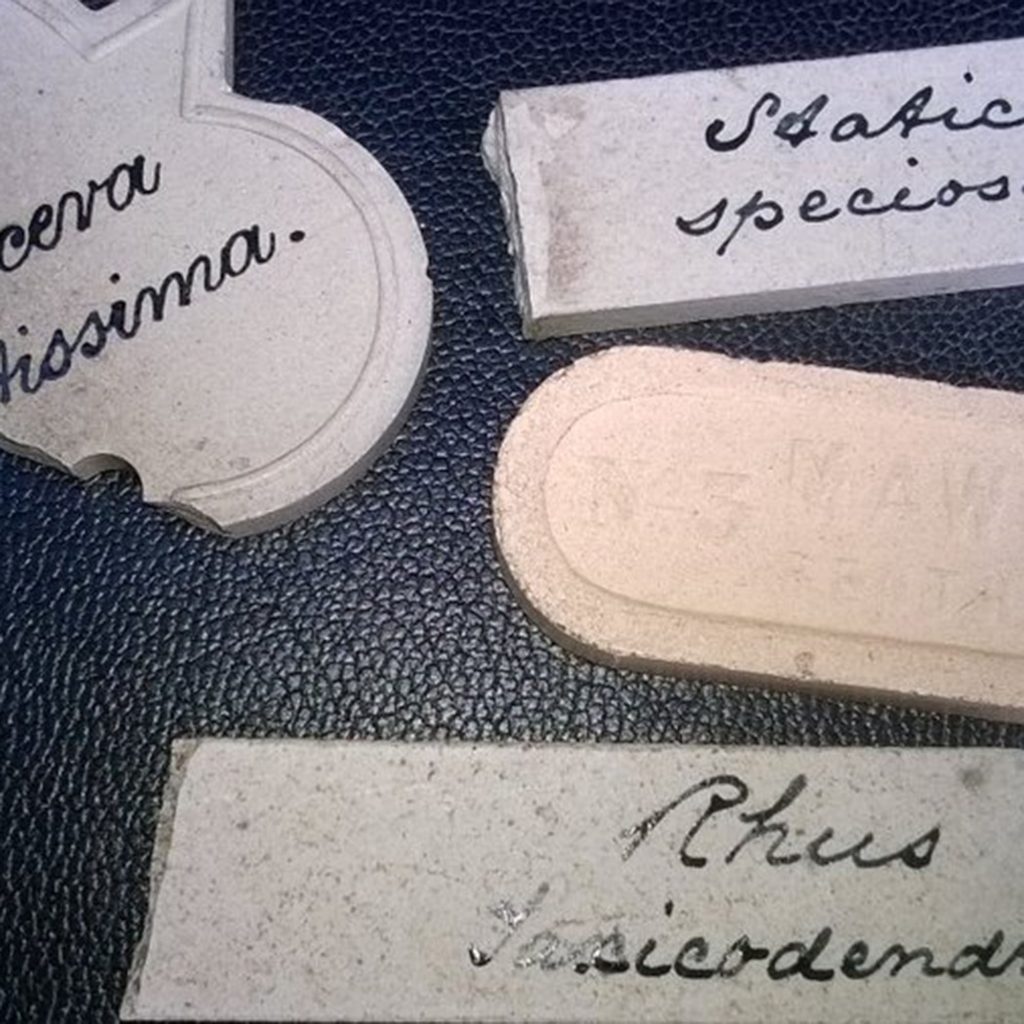
Plant Labels Designed by George Maw – The National Trust
George Maw (1832 – 1912) and his brother Arthur (1834–1911) leased Benthall Hall, Shropshire from 1853 to 1886, prompted by their wish to move their tile factory nearer to better clay deposits. At nearby Broseley they built the Benthall Tile Works. At its peak, Maw & Co was the largest tile-producing company in the world, manufacturing over 20 million tiles a year
George Maw. was an accomplished botanist, geologist, ceramicist and artist. He was a Fellow of the Linnean Society and the Royal Horticultural Society (RHS), and a plant collector. He shared the geological theories he formulated during plant collecting expeditions, many alongside Joseph Hooker, Director of Kew (1817 – 1911) with the Geological Society, of which he was also a Fellow. The archives at both the Royal Botanic Gardens Kew and RHS Lindley each contain over 100 letters between the Maw and Hooker. Hooker wrote to Maw about the development of the gardens at Kew and his concerns about the staffing and management of the gardens. Maw wrote of his plant-collecting expeditions and the cultivation successes in his gardens at Benthall Hall. Initially, however, the letters focussed on refining the design of Maw’s plant ‘tallies’ or labels. In June 1868 Hooker wrote that Wedgwood’s plant labels were perhaps of better quality, while Maw’s broke when experimentally dropped onto a stone floor. Over the course of many letters the robustness, shapes and colours of the new plant labels for Kew were gradually agreed upon. In January 1869 Hooker even wrote to Maw saying that he was instituting a fine for any gardener at Kew who broke one.
Maw’s own plant labels, patented in 1868, continue to be found in Benthall’s garden soil – many broken but retaining legible plant names. A display of labels can be seen in the Hall, alongside some of Maw’s floor tiles.
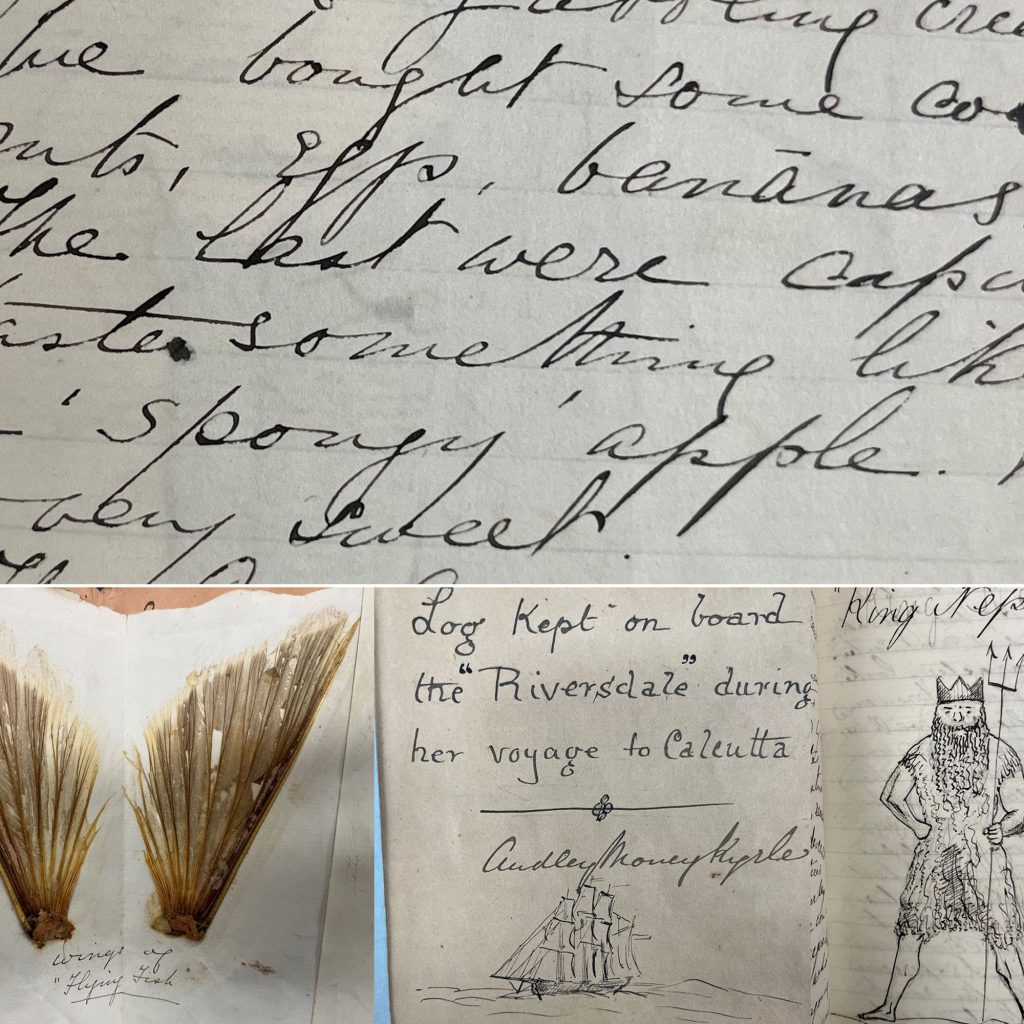
Journal by Audley Money-Kyrle – Wiltshire & Swindon History Centre
This journal, kept by Audley Money-Kyrle 1866-1867 while on board ‘Riversdale’ travelling to ‘Calcutta’ [Kolkata] presents a wonderful record of the months long voyage: ceremonies onboard ship, including the shaving by ‘Neptune’ of those ‘crossing the line’ (i.e. Equator) for the first time, and the burning of a stuffed horse to celebrate the passage of a month at sea. It also contains a description of eating banana for the first time “We bought cocoa nuts, eggs, bananas.. the last were capital, taste something like a ‘spongy’ apple & are very sweet”. It also contains the pressed ‘wings’ of a flying fish!
This item highlights several aspects of our collections; as a local record office we hold a wonderful variety of archives telling the story of Wiltshire and its people since the 12th century through a huge range of documents including diaries, letters, books, maps, photographs, oral histories and more, documenting everyday personal, legal and business affairs, and connecting Wiltshire with local, national and international events, people and places!
We also have letters from Audley written while serving in the army in India between 1866-1878, and so this collection also encourages acknowledgement of, and conversations around, current themes of decolonisation within archives.
Image reproduced with the permission of the Money-Kyrle family.
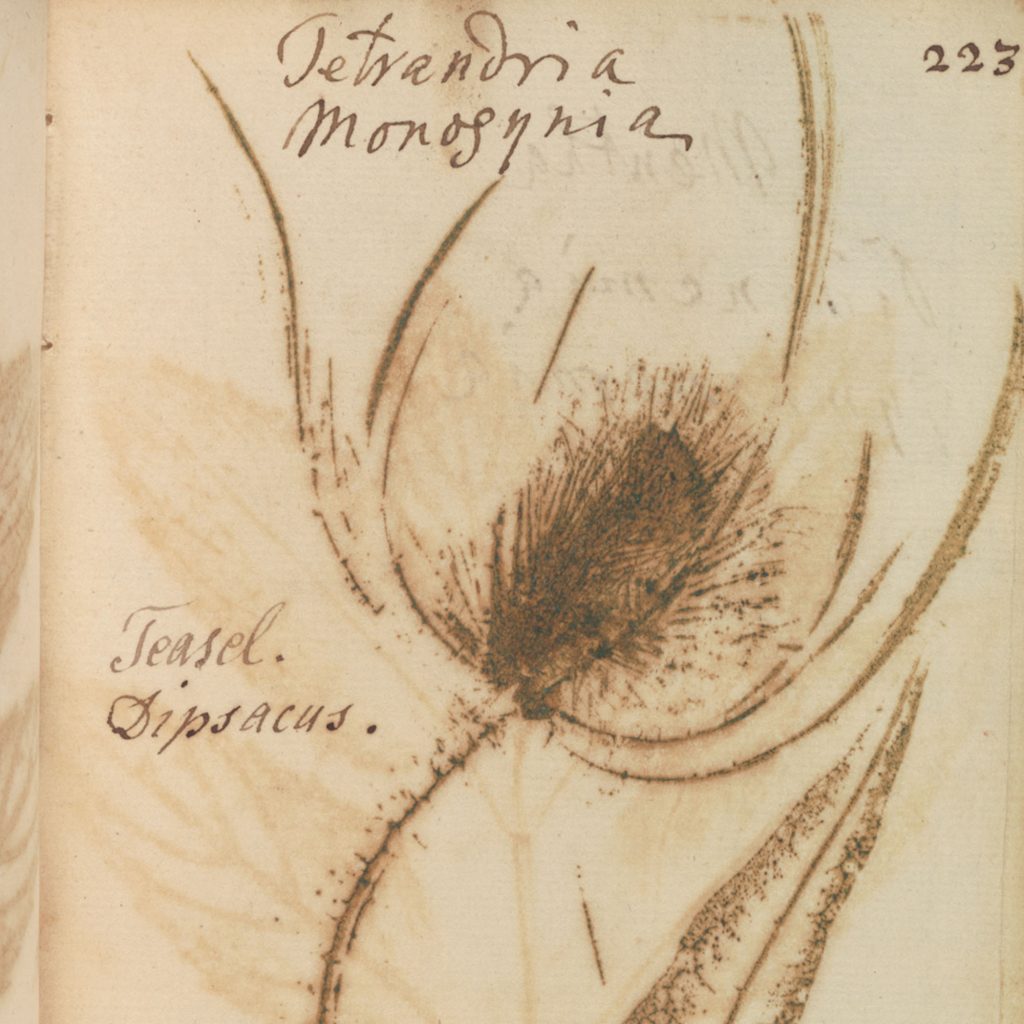
Detail of a Teasel – Cambridge University Library
Detail of a teasel from a nature-printed volume belonging to the Darwin family
This image comes from a small volume of ‘nature printed’ leaves and flowers that belonged to Charles Darwin (1758-1778), the uncle of the famous naturalist of the same name. He was the eldest son of Dr Erasmus Darwin (1731-1802), well known for botanical poetry and for translating works by the Swedish botanist Linnaeus. It is likely that he used the book as an aide memoire for his medical studies which would require knowledge of botany.
Nature printing is a technique for recording botanical specimens. The printer could record a particular plant by inking a flattened specimen and pressing it directly onto paper. Only a few impressions can be made from a single specimen, so a nature printed collection, such as this one, is often unique. Although it gives a somewhat limited picture of the living plant, nature printing gives a life-sized, transportable impression.
This book is one of several examples of botanical collecting by the Darwin family held by Cambridge University Libraries, from a ‘hortus siccus’ of dried plants belonging to Erasmus Darwin to herbarium specimens gathered on the Beagle voyage in the herbarium at Cambridge Botanic Garden.
Credit: ‘Detail from MS Add.10141. Reproduced by kind permission of the Syndics of Cambridge University Library’
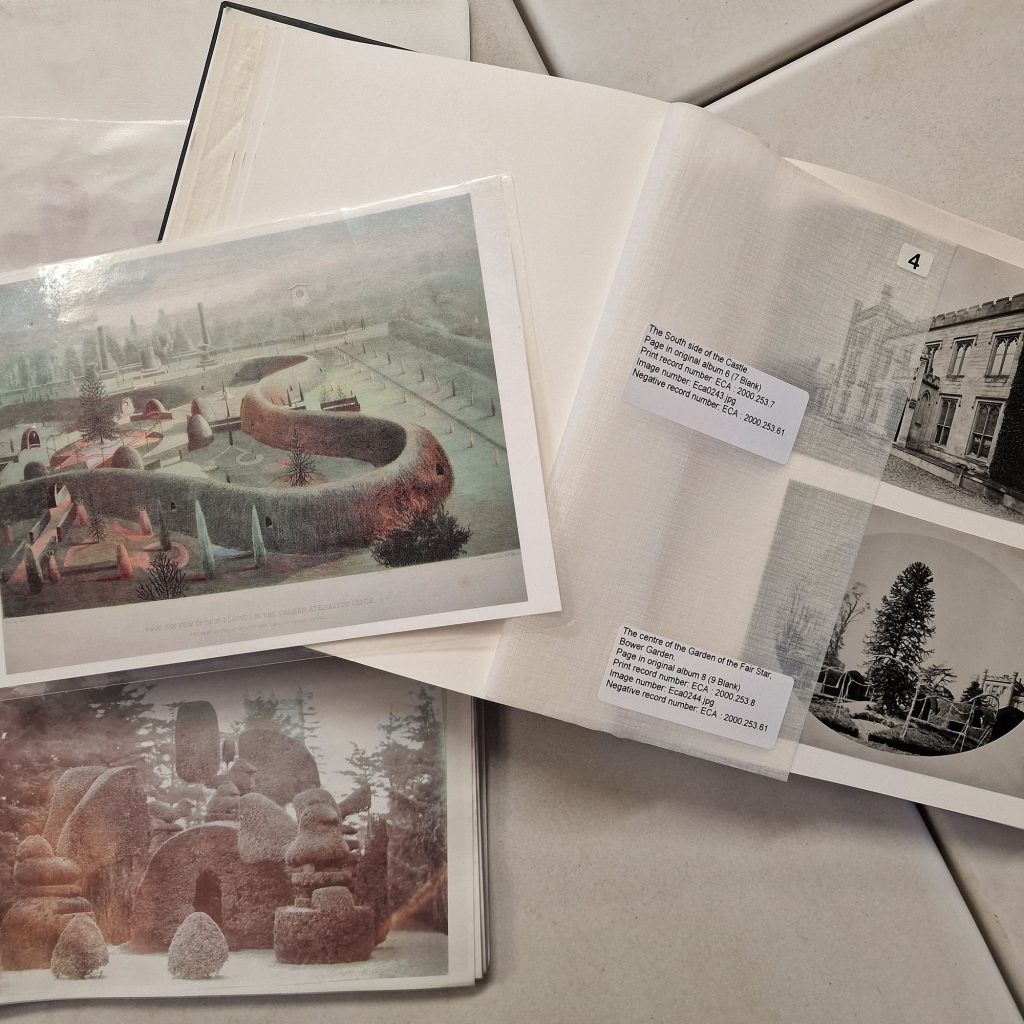
The Elvaston Castle & Gardens Trust
Elvaston Castle Country Park, located in Derbyshire, is home to an archive that provides a detailed account of the castle’s transformation from a private residence to a public park. The archives include historical documents, photographs, maps, and records that date back to the 18th century when the castle was a holiday home to the Stanhope family. These archives offer insight into the architectural evolution of the Gothic Revival castle and its surrounding 321-acre parkland, designed by William Barron. Additionally, they document the social history of the estate and its transition under public ownership in the 20th century. Researchers and visitors can arrange to meet with the archivist at Elvaston by appointment and explore the cultural and natural heritage preserved within Elvaston Castle, making it a valuable resource for understanding the region’s past.
Access to the archives at Elvaston Castle are by appointment only.
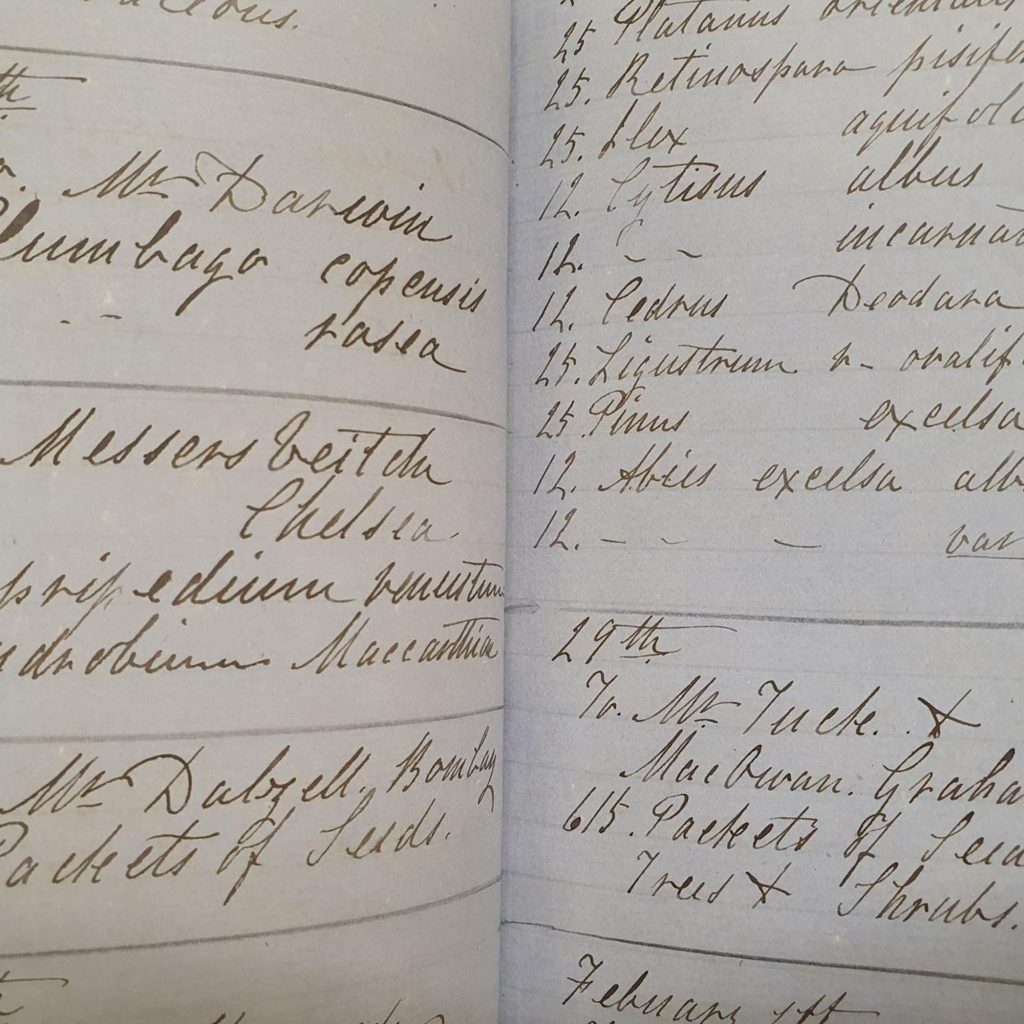
Goods Outwards 1860-1869 – Royal Botanic Gardens Kew
The archives of the Royal Botanic Gardens, Kew, holds correspondence, notebooks, memoranda, and manuscripts relating to the history of Kew and the history of botany more broadly. Whilst there are so many collections to choose from, one collection we have decided to highlight here is our Goods Inwards and Outwards collection. This spans 200 years and records plants being sent to and from Kew; it is a fantastic resource to track plant networks and botanical exchanges.
This is a page out of a Goods Outwards volume, documenting where Kew sent plants during January 1867. You might recognise some famous botanical names on here: Mr Darwin was sent some Plumbago capensis whilst Mr Veitch, of plant nursery fame, received Dendrobium maccarthiae, an orchid. These entries often relate to letters found in other collections and can draw a great map of correspondence and plant transfers.
Our Goods Inwards and Outwards volumes are in the process of being indexed, so if you are interested in finding specific collectors or botanists, please reach out at archives@kew.org.